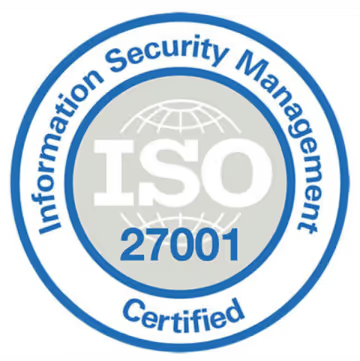$322 billion is lost annually due to turnover and lack of productivity caused by employee burnout [1]. That’s where an app for corporate wellness comes in. Unlike traditional programs that rely heavily on in-person workshops or fragmented offerings, wellness apps centralize resources in one digital platform. Let's discover how they can help your organization.
Why Wellness Apps Are the Future of Employee Well-Being
Think of the mobile phone you had 15 years ago. Do you think it's adapted to your current necessities? That's what occurs with wellness apps in the corporate context. They must adapt to the needs of employees and organizations globally to actually deliver results.
Modern workforces, specially multigenerational organizations, expect support that is:
- Flexible
- Inclusive
- And always accessible
Therefore, what sets a corporate wellness app apart is their ability to adapt. We are talking about:
- Personalized recommendations
- AI-driven nudges
- Integrations with existing HR platforms
- Corporate wellbeing challenges that motivate people
- Multilingual support to taclke language barriers
That's how wellness apps become not only a core part of an organization’s employee experience, but also a tool that increases motivation, productivity, and wellbeing. daily work life.
What to Look for in a Corporate Wellness App
An employee wellness app is most effective when it addresses multiple dimensions of well-being rather than focusing on a single area like fitness or meditation. In fact, research consistently shows that holistic programs (those combining physical, mental, emotional, and even financial health) have a stronger impact on engagement and retention [2].
Core components include:
- Mental health support: Access to therapy sessions, stress-management tools, and mindfulness practices.
- Learning & micro-skill modules: Bite-sized content on resilience, emotional regulation, and leadership skills that employees can apply immediately in their roles. Our corporate challenges, for example, have this purpose and haven proven to be highly engaging.
- Nutrition and lifestyle guidance: Personalized plans that encourage sustainable, healthy habits.
- Physical activity: On-demand fitness classes, workout plans, and integrations with wearables. In Meditopia's case, we have allied with a hundred gym facilities to offer a wide variety of activities for our corporate partners. Send us a message to talk more about this benefit!
- Financial and legal resources: Coaching or counseling to reduce stress from money or compliance issues.
- Data insights: Dashboards that show HR leaders utilization rates and outcomes, enabling them to adjust strategies based on evidence and prevent mental health challenges at work.
- Sleep optimization tools: Integrated sleep tracking, relaxation techniques, and educational modules, given how poor sleep is linked to productivity loss and burnout.
Corporate Wellness App vs. Traditional Wellness Programs
While traditional wellness programs often focus on in-person workshops, gym subsidies, or one-off seminars, digital solutions bring a level of accessibility and measurability that older models can’t match.
So no, a wellness app for employees is not just a convenient delivery channel; it redefines how organizations engage with well-being. Here’s how the two approaches compare:
Best Corporate Wellness Apps to Consider
Choosing the right digital solution can be overwhelming, with so many providers promising better engagement and healthier employees. To help HR leaders and decision makers, we’ve highlighted some of the best corporate wellness apps to consider, each offering unique strengths in supporting workforce well-being.
1. Meditopia for Work
Meditopia combines an EAP with holistic well‑being: large one‑to‑one consultant access (psychologists, nutritionists, physiotherapists, coaches), 10,000+ preventive resources, and multilingual digital delivery.

- Unique selling points: EAP + holistic model in one platform; extensive one‑to‑one consultant network; large content library.
- Key services: Short‑term counseling, coaching, crisis support, self‑guided programs, workshops/trainingsfor managers and employees.
- How it supports people: On‑demand content plus live experts across mental, physical, and lifestyle needs.
- Pricing info: Scalable, PEPM.
2. Headspace for Work
Headspace provides end‑to‑end mental health care with very fast access times: coaching “within two minutes” and therapy “in 1 day,” plus care navigation; serves 4,000+ employers and health plans.
- Unique selling points: Rapid time‑to‑care; broad employer footprint; meditation, sleep, and focus tools.
- Key services: Mindfulness content, behavioral health coaching, therapy, psychiatry, care navigation.
- How it supports people: Self‑care to human care escalation, delivered privately via mobile.
- Pricing info: Not publicly listed.
3. Calm for Business
Calm’s employer solution spans mindfulness and sleep experiences plus Calm Health clinical programs developed by psychologists for conditions (e.g., anxiety, depression), life events, and occupational stress.
- Unique selling points: Well‑known consumer UX paired with evidence‑based employer programs.
- Key services: Condition‑specific programs, meditation and sleep content, employer deployments.
- How it supports people: Guided paths for mental‑health conditions plus everyday self‑care.
- Pricing info: Personalized PEPM.
4. Virgin Pulse
Virgin Pulse is now part of Personify Health, which brings health, well‑being, and navigation together in one platform for employers.
- Unique selling points: Unified “personalized health platform” that blends navigation with well‑being.
- Key services: Benefits/navigation tools, engagement programs, personalized journeys.
- How it supports people: Connects members to the right care, benefits, and daily habit support.
- Pricing info: Not publicly listed.
5. Limeade
Limeade has joined WebMD Health Services; together they emphasize “infusing well‑being into work” with enterprise scale.
- Unique selling points: Strong focus on culture and engagement.
- Key services: Well‑being programs/challenges, communications, program playbooks; enterprise services via WebMD HS.
- How it supports people: Habit building and engagement woven into daily work life.
- Pricing info: Not publicly listed.
6. Wellable
Wellable offers a modular platform with holistic challenges, education, benefits navigation tiles, and direct integrations with leading apps & devices; it publishes a subscription pricing overview.
- Unique selling points: Deep device/app integrations; configurable modules; managed communications and incentives.
- Key services: Wellness challenges, content library, reporting/analytics, rewards & recognition.
- How it supports people: Gamified participation, real‑time syncing.
- Pricing info: Subscription model with managed services; exact rates not listed publicly.
7. Modern Health
Modern Health delivers stepped‑care mental health (self‑care, coaching, therapy) with flexible pricing models (PEPM or usage‑based) and options like extended therapy coverage via certain employer/plan setups.
- Unique selling points: Flexible pricing; stepped‑care design; global clinical network.
- Key services: Coaching, therapy, crisis support, EAP‑style work‑life services.
- How it supports people: Matches members to the appropriate care level and extends access via health‑plan integrations where available.
- Pricing info: PEPM or usage‑based models.
8. Vantage Fit
Vantage Fit is a comprehensive corporate wellness and employee engagement platform. It helps organizations foster healthier lifestyles through data-driven insights, gamified wellness challenges, and seamless integrations with wearables.
- Unique selling points: Gamification features and deep activity/tracking capabilities; broad device integrations and a detailed HR dashboard for analytics.
- Key services: Nutrition/hydration monitoring, mood/mental-well-being tools, challenge campaigns and incentive management.
- How it supports people: By offering a unified mobile platform where employees can participate in wellness challenges, sync their activity or nutrition, earn rewards.
- Pricing info: Depends on scope/customisation.
How to Choose the Right Wellness App for Your Company
Selecting the right solution is less about chasing trends and more about aligning with your workforce’s real needs. Whether you’re considering an app to track employee wellness or the best app for corporate health and wellness, here’s a checklist to guide your decision:
- Budget & Scalability
- Start by clarifying how much you can invest and how that spend scales as your workforce grows.
- Some platforms charge per employee per month, while others offer usage-based models.
- Type of Workforce (Remote, Hybrid, Deskless)
- A hybrid or remote workforce needs mobile-first access and asynchronous support.
- Deskless teams benefit from SMS-based prompts or offline content that doesn’t require constant connectivity.
- Language & Cultural Needs
- If you operate across multiple countries, prioritize a wellness app with multi-language support and culturally adapted content like Meditopia for Work.
- Inclusivity in communication often drives adoption more than the number of features offered.
- Ease of Integration
- Look for platforms that connect smoothly with HRIS, benefits portals, and collaboration tools.
- Single sign-on (SSO) and API integrations reduce IT overhead and encourage higher participation.
- Engagement & Support
- A wellness app succeeds only if employees use it. Check for gamification, nudges, group challenges, or recognition features that encourage ongoing participation.
- Ask vendors about onboarding programs, comms toolkits, and manager involvement strategies to boost engagement rates.

























